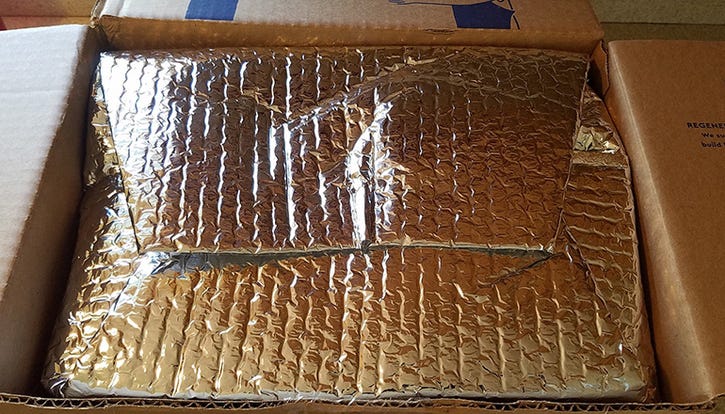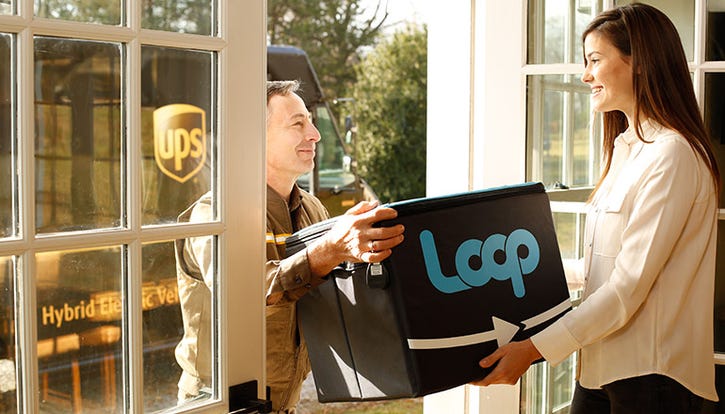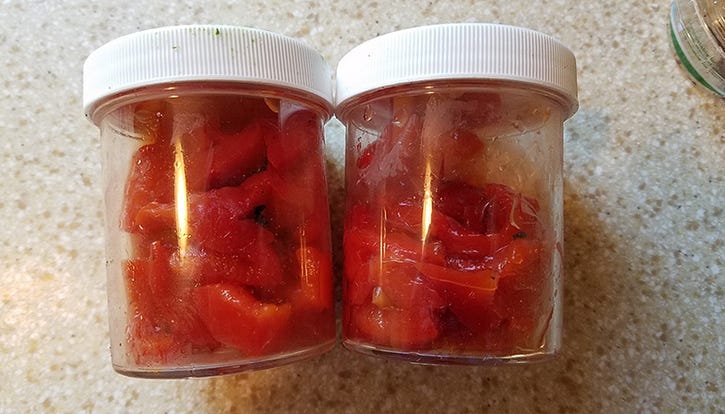Online Food Packaging Drives Search for Sustainability
Online meal kits result in more packaging waste, especially plastics, and not everyone views the excess materials as a tradeoff for the pluses.

Around 2012, a new foodservice model rolled out in the U.S.— pre-portioned meal kits ordered online and shipped to homes. By 2018, this model saw a 22 percent growth spike, generating about $3.1 billion in sales, according to market research firm Packaged Facts.
The fast-growing trend has sustainability experts asking, "How much packaging do meal kits and other Amazon-like food delivery models generate, and what’s happening to these materials? How does this compare to packaging from traditional brick and mortar grocery stores?"
A recent University of Michigan study answered some of these questions by looking at the whole lifecycle of meal kits and grocery store equivalents. Researchers determined meal kits generate about 33 percent less greenhouse gas emissions because there’s less food waste due to planned portions and a more efficient supply chain.
But these products result in a lot more packaging waste, especially plastics, and not everyone views the excess materials as a tradeoff for the pluses.
“When shipping to individuals through the mail opposed to shipping bulk through supply chains, food has to be individually packaged. This results in an increase in packaging. Further, when shipping to individuals, companies don’t have the same refrigeration infrastructure as brick and mortar distribution chains, which limits sustainable packaging options,” says Allan Pearce, shareholder advocate for Trillium, an asset management firm focused on sustainable investing.
Some organizations focused on sustainability are narrowing in on freezer packs placed inside the boxes to preserve perishables during shipping. These gel packs are a predominant method of keeping food fresh during shipping and most of them are landfilled, according to Justin Overdevest, senior associate at Good Company, a sustainability consulting firm in Eugene, Ore.
As of a couple of years ago, Blue Apron alone reportedly sent out 8 million meals a month kept cold with gel packs.

Good Company recently did a confidential analysis for a client that assessed environmental impacts of meal delivery products compared to traditional grocers’ or restaurants’ products. One focus area involved exploring impact of different disposal pathways for gel packs, including landfilling, composting and pouring contents in the drain.
“We compared technical content of material looking at data from the Environmental Protection Agency and the Department of Environmental Quality. And we reached out to solid waste facilities and wastewater treatment facilities to learn their practices and potential issues with gel packs,” says Overdevest.
Good Company concluded that flushing was the most benign option because gel packs are mainly water and not toxic. But in the last few years, flushable materials have become an issue for wastewater treatment plants.
The compost option proved limited due to wide variations in composting systems, which has led many communities to decide to stop taking these materials.
“The conclusion was that the best method was for companies to pick up gel packs and other packaging materials when dropping off the next meal kit—though this can create more emissions unless you streamline your distribution system. Effectiveness also depends on the type of material that is reused,” says Overdevest.
Loop is a new delivery platform, in a pilot stage, with participation from food companies representing 300 brands that offer online ordering. A few include Nestlé, Coca-Cola, Unilever and Procter & Gamble. UPS delivers products to homes in reusable, washable zippered bags. The packaging within the bags is also designed to be durable, reusable and washable.

Häagen-Dazs, one of the participants, re-engineered its ice cream container to keep ice cream cold through shipping. UPS picks up empty containers and sends them to Häagen-Dazs, where they are washed and refilled.
“This type of product delivery is what I think needs to happen with meal kits, too. They are often delivered at the same time on the same day, so it’s easy to schedule to pick up empty containers,” says Kelly McBee, waste program coordinator for As You Sow, a nonprofit shareholder advocacy group focused on sustainability.
“For necessary packaging that may not be reusable, I think online grocers and meal kit companies should take responsibility to address them at the end of their lives. They should coordinate with local governments to be sure their packaging will be accepted for recycling. And they should contribute monetarily to infrastructure upgrades,” adds McBee.
Purple Carrot, a meal kit company, recently launched 100 percent recyclable packaging that’s accepted in curbside programs. Its corrugated boxes are made from 95 percent recycled material and its liners are made from recycled cellulose paper fiber.
But not every company puts sufficient thought into ensuring the materials they use are recyclable. One point made by Sandi Childs, film and flexible programs director for the Association of Plastic Recyclers, is that meal kits are sourcing food packing from different suppliers. Some may use polyethylene (PE) and others may use polypropylene. Meanwhile, the store drop-off system is built around PE only, which presents a potential problem.
“Further, consumers must read instructions very carefully rather than assume everything is curbside recyclable,” says Childs.

Over time, more companies are coming up with novel materials to incorporate in their packaging to try and make it more sustainable—for instance denim in a bag as insulation, says Adam Gendell, associate director of the Sustainable Packaging Coalition, a membership packaging industry collaborative.
“But because change is happening so fast, I think there’s not yet a common understanding of what the sustainability considerations are for packaging meal kits [and other online food delivery products],” says Gendell.
He, like others in the sustainable packaging space, are watching to see what happens with the returnable packaging concept as the search continues for solutions. But it’s complicated.
“Look at the Loop program. It’s a bold initiative, but I think it is experimental, so there’s a lot that still has to be figured out,” he says.
About the Author
You May Also Like




.png?width=300&auto=webp&quality=80&disable=upscale)